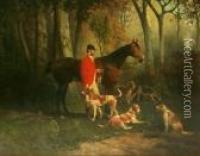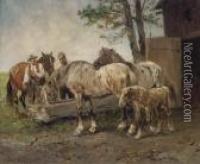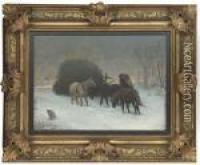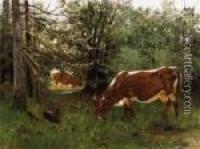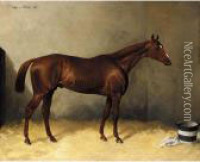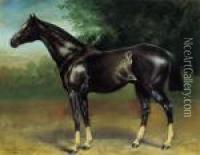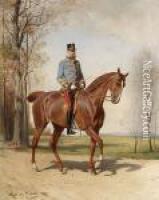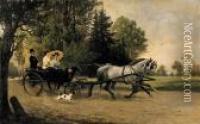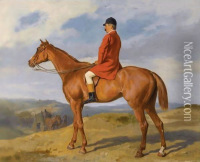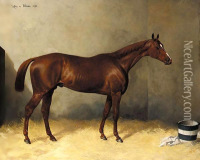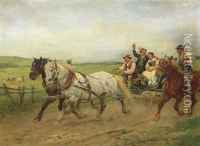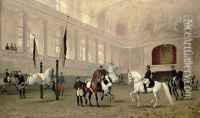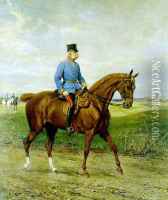Julius von Blaas Paintings
Julius von Blaas was an Austrian painter, born on March 22, 1845, in Albano, near Rome, Italy. He was a part of a family of notable artists; his father, Carl von Blaas, was a celebrated painter, and his brother, Eugen von Blaas, also pursued a career in art. Julius was known for his genre scenes, portraits, and his depictions of horses and equestrian events, which displayed his deep understanding of equine anatomy and movement.
Julius von Blaas established his reputation primarily as an equestrian artist. He received his initial training from his father and later attended the Academy of Fine Arts in Venice. He traveled extensively, which influenced his artistic development, before eventually settling in Vienna. There, he became a professor at the Vienna Academy and was well-respected in academic circles.
Von Blaas was particularly skilled in capturing the dynamic essence of horses in action. This skill made him popular among aristocratic patrons who desired to have their prized horses and moments of equestrian glory immortalized on canvas. His works are characterized by their realism, attention to detail, and the artist's ability to convey the nobility and grace of his subjects.
Throughout his career, Julius von Blaas received numerous commissions from European nobility and was a regular participant in exhibitions, where he garnered praise and awards. His paintings often reflect the social and cultural milieu of the Austro-Hungarian Empire, providing a window into the leisure activities of the upper classes during the late 19th and early 20th centuries.
Julius von Blaas passed away on August 17, 1922, in Vienna, Austria. His legacy includes a significant body of work that continues to be appreciated by art historians and collectors alike. His paintings can be found in various museums and private collections, serving as a testament to his skill and the enduring appeal of his artistic vision.

